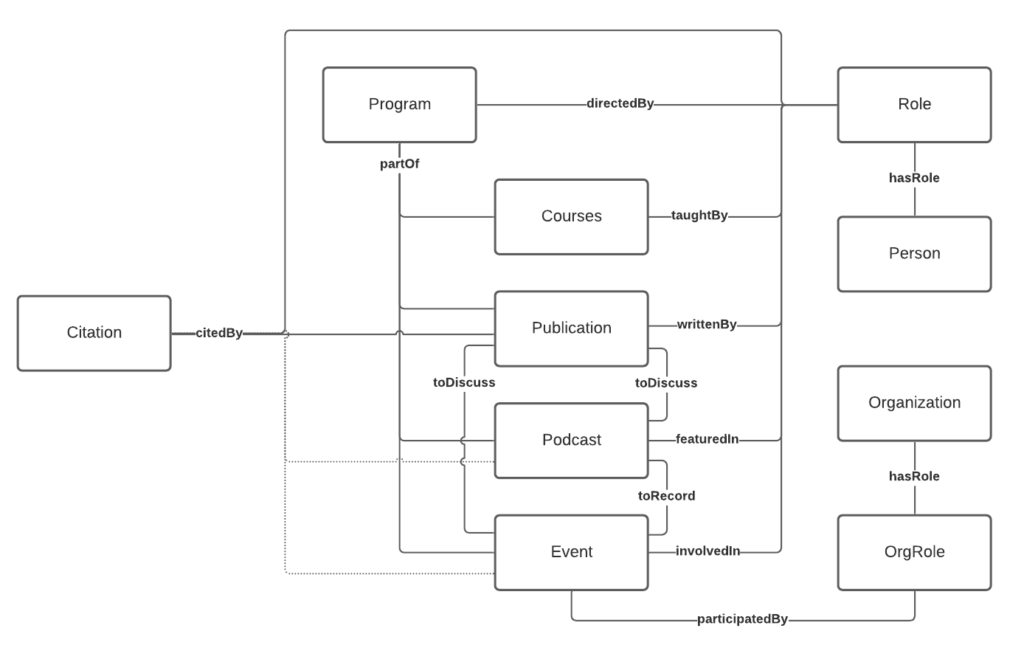We’ve spent over ten years developing websites for think tanks and university researchers who believe in free markets and the principles of liberalism.
In that time, we’ve observed the same problems happening over and over again:
- A research center relaunches their website using another developer and their traffic plummets. We get hired to recover traffic and cleanup the mess.
- We get hired to help a think tank improve SEO, only to find that their site’s architecture is a nightmare. We can only improve their performance so much without rebuilding huge swaths of their site in order to improve the basic technicals. The think tank has no budget for this, so their site languishes.
- Organizations pay for custom ground-up site builds that are nearly identical in functionality to their peers. The wheel is continuously reinvented for fees ranging from $30,000 to $500,000.
Something needs to change. We can’t afford to lose the battle of ideas because we keep getting the infrastructure wrong and allocating marketing budget to make-work projects for developers.
So, instead building the same sorts of websites over and over again—we’ve decided to build a platform. We want every think tank and research center to have a site that fits their content, works well for visitors, and performs well in search. The key to achieving that is to stop building bespoke websites, and to instead build custom designs on top of a common platform.
But we’re not building some proprietary monstrosity that runs on ASP.net on kerosene-powered server in your IT closet. No license fees, no lock-in, no begging a Microsoft-certified neckbeard for permission to publish your research.
We’re building a customized WordPress platform using a modern React framework that’s blazing fast.
We’re incorporating the latest SEO approaches that leverage the expertise and authority that our clients have and that Google wants to present its users.
And we’re using our experience working with clients like The Fordham Institute, The Center for Growth and Opportunity, The Reason Foundation, The Federalist Society, and so many others to build a platform that really fits the public policy community’s needs.
The Right Content Model
Most think tank and research center web designs fail because of content, not because of technology.
By “content” here I mean everything that the organization produces and catalogues—publications, conferences, media mentions, blog posts, citations in academic journals, press releases, videos, podcasts, the whole shebang.
Often, the scope of all of this content and how it all relates isn’t considered at all. Instead, the focus is (wrongly) placed on technology and design, something way outside the expertise of a public policy group.
The results are disastrous. Wonks pretend to be developers rather than explaining to developers how the world of public policy works.
We’ve learned to put content first, to interview our clients about their domain of knowledge, and to figure out how to represent that in a content management system (CMS). So, rather than trying to force public policy research into the default settings of a particular platform, we fit the platform to fit the public policy content.
We do this through domain modeling and content mapping, a process that helps us determine what sorts of content you create and how it all fits together.
Rather than having content siloed and disconnected from other works, PolicyPress highlights how everything you do fits into a web of knowledge. Publications can be connected to each other, but also to the podcast episode that discussed the findings in that publication, or the event that featured the authors in a panel discussion. Research can be tied to media appearances and individual essays can be combined in a series and presented as a virtual book.
We also present the authors and other content creators in a way that fits how your organization works. Scholars and fellows can be divided into different groups—like visiting scholars or emeritus fellows— and presented as you like. Contributors and co-authors can be cited while referencing off-site profile pages.
By modeling out all of these interactions and associations, we can make the process of organizing content easier for your organization and finding content much easier for visitors to your site.

Modeling also extends the longevity of your site. When we understand the shape and structure of your content, we can create a specific place for every attachment, connection, and attribute. This is different from the typical approach of throwing everything into a WYSIWYG editor, creating an undifferentiated content blob.
Our “everything in its place and a place for every thing” approach that makes your content modular. So, when priorities change, we can simply reshuffle how content is presented, rather than having to edit hundreds of pieces of content individually.
Web-Native Publications
Publications are the foundation of your work, so they shouldn’t be relegated to PDF attachments.
Nielsen Norman Group, renown usability experts, have called PDFs “Unfit for Human Consumption.” Since 1996 they’ve studied web users interacting with PDFs and found consistent reactions—nearly universally negative.
Users find PDFs to be limiting, slow to load, jarring (when they are expecting a web page), and hard to navigate. This shouldn’t be surprising—PDFs are made for 8½x11 sheets of paper, not the wide variety of screen sizes and devices we use today.
It’s fine to offer PDF download, but you have to present long-form academic writing in a way that’s readable and usable on the web. PolicyPress does this in three distinct ways:
- A floating table of contents is automatically generated from the headings of your publication, allowing users to “scan” through documents quickly.
- Footnotes added to the text of a publication generate a numbered “References” section at the bottom of your publication, listing your sources.
- PolicyPress utilizes Gutenberg, the WordPress block editor that allows for elements like tables, pull quotes, block quotes, images, and multi-column layouts to be integrated into your publications.
The elements come together to a create a page that readable on smartphones, tablets, laptops, and desktop computers.
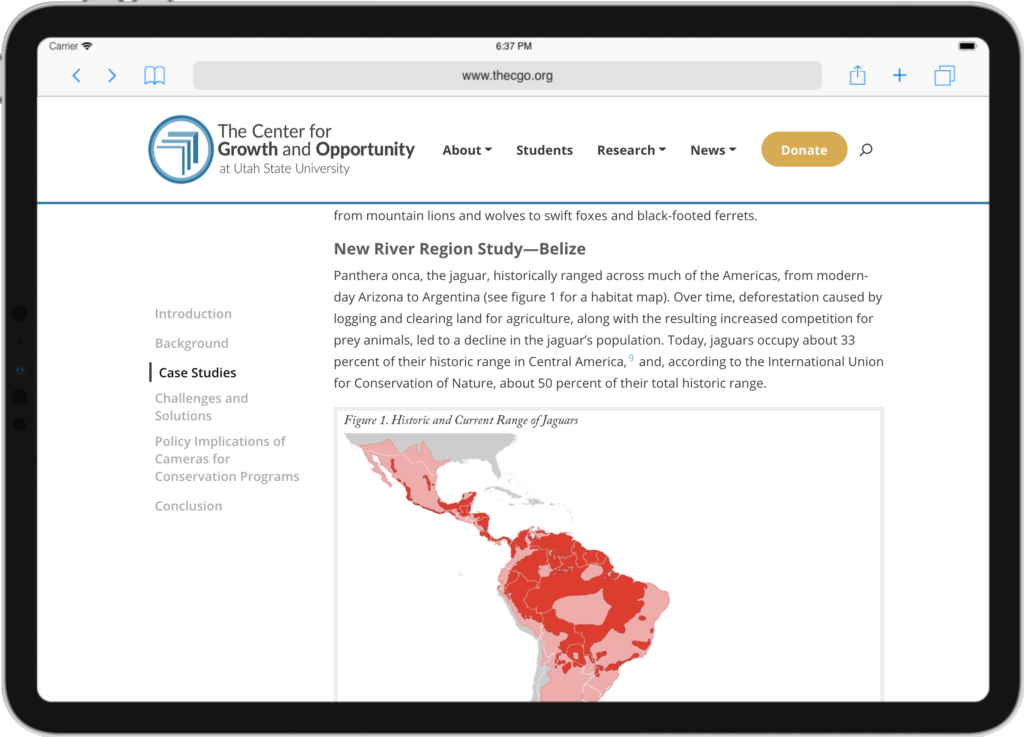
By posting all of your content on webpages, your research also becomes much more visible in search engines like Google, driving more traffic to your site.
Built for SEO
Over the last several years Google has placed more and more emphasis on expertise, authority, and trust or what it refers to as E-A-T. Think tanks and university research centers have expertise, their experts are often authorities in their fields, and so long as they conduct themselves ethically, should be trustworthy sources of information. This means that public policy researchers have a tremendous opportunity to have their work seen, if only Google can determine what that content is and who might find it relevant.
Schema.org Markup
PolicyPress leverages your E-A-T through the use of schema.org markup, essentially labeling your authors and their works and making it clear to Google how they relate.
That markup communicates what degrees your authors hold, where they’ve worked, and even the awards they’ve won
That helps Google differentiate your expertly-written content from the content that may cover the same topic, but without the depth of knowledge you bring to the table.
We add similar markup to content depending on its format. News stories, white papers, working papers, podcasts, and videos all receive unique markup that make it easy for Google to understand what they are and the topic they discuss.
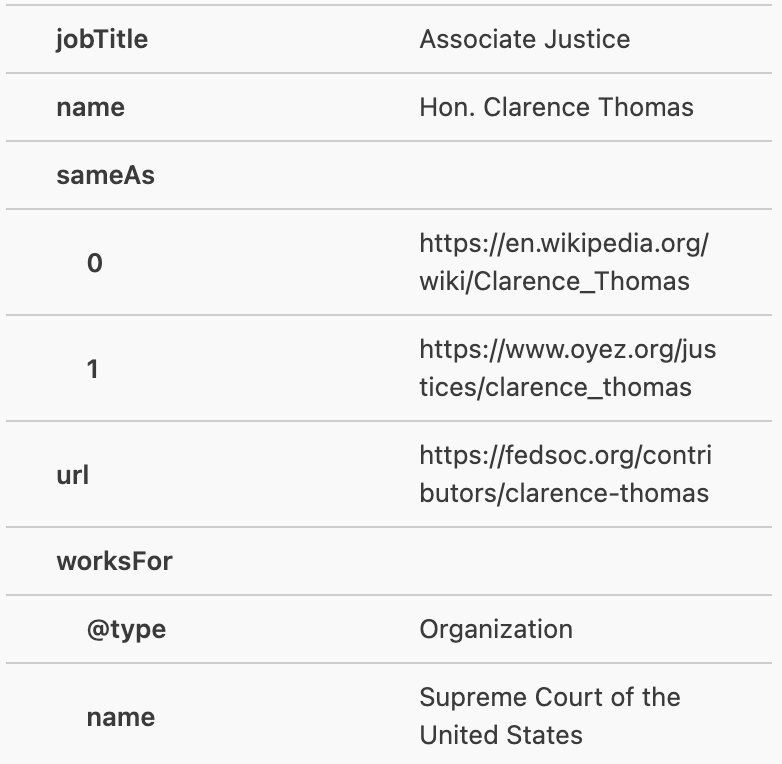
Content Visibility
Web-native publications, as discussed above, also contribute to SEO. By wresting your content out of PDFs and into structure, crawable, and indexable web pages, PolicyPress can increase the visibility of your content in search dramatically.
We’ve seen organizations dramatically expand their number of ranked keywords and climb from obscurity to page-one Google ranking simply by moving their content out of PDFs.
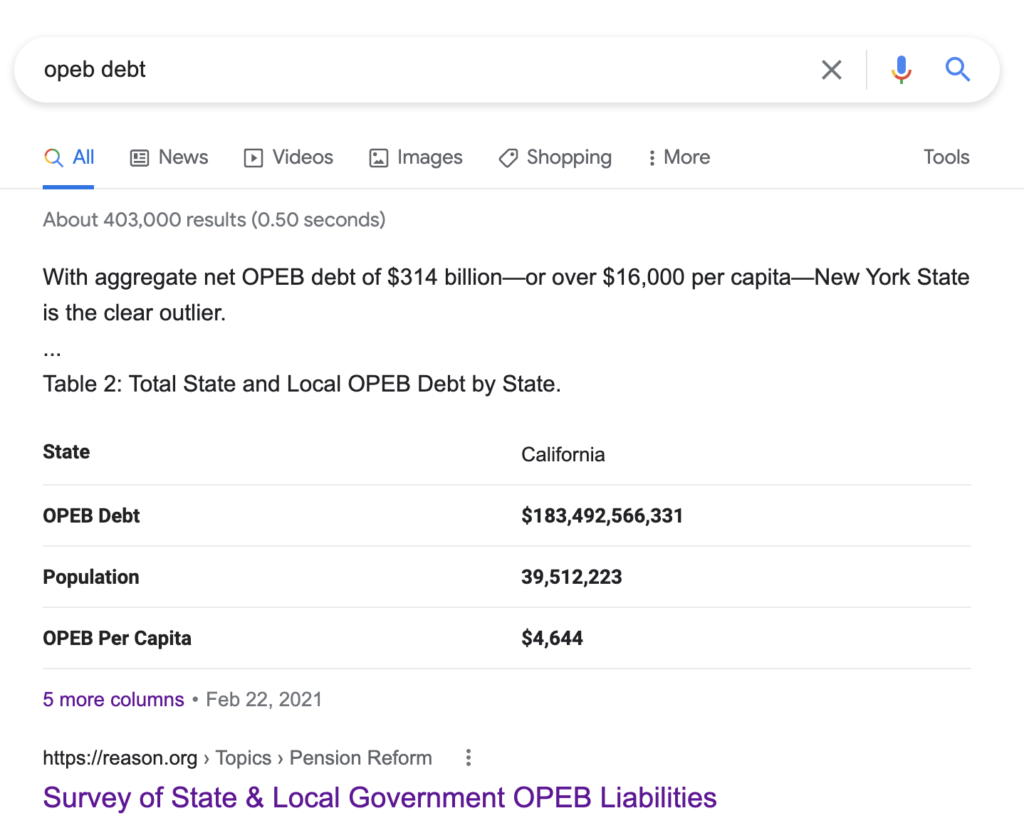
The Reason Foundation climbed to #1 for the keywords “opeb debt” after pulling their content out of PDFs and using our web-native publishing format including a floating table of contents and data structured in easily indexed tables, resulting in the prominently featured result above. By structuring data in tables, Reason also ranks #1 for searches like “opeb debt florida” or “opeb debt wisconsin.”
Internal Linking
While more links to your content from other websites improve your search visibility, so do links from authoritative pages within your own website. PolicyPress uses reciprocal linking on all content types to make internal linking fast and therefore a sustainable part of your content creation process.

For example, when the Center for Growth and Opportunity at Utah State University publishes its Tech Poll, it can pass incoming link equity from Axios, The Harris Poll, and Yahoo! Finance to other publications like Social Media, Misinformation, and Voting Decisions.
Blazing Fast
How fast? We’ve been able to reduce page load times from over 7 seconds to 1.2 seconds, or even lower, depending on the content. Though 5.8 seconds may seem like a trivial amount of time, it’s the difference between a frustrating slow website and a gratifying, easy web browsing experience.
Part of this speed difference is due to the modern JavaScript framework we use to build each PolicyPress design, but lots of other behind-the-scenes stuff is taking place. Images are optimized for multiple devices sizes, files are compressed, and pages linked for the current page are “pre-fetched,” meaning they are loaded in the background before a user clicks on them, making navigation seems instantaneous.
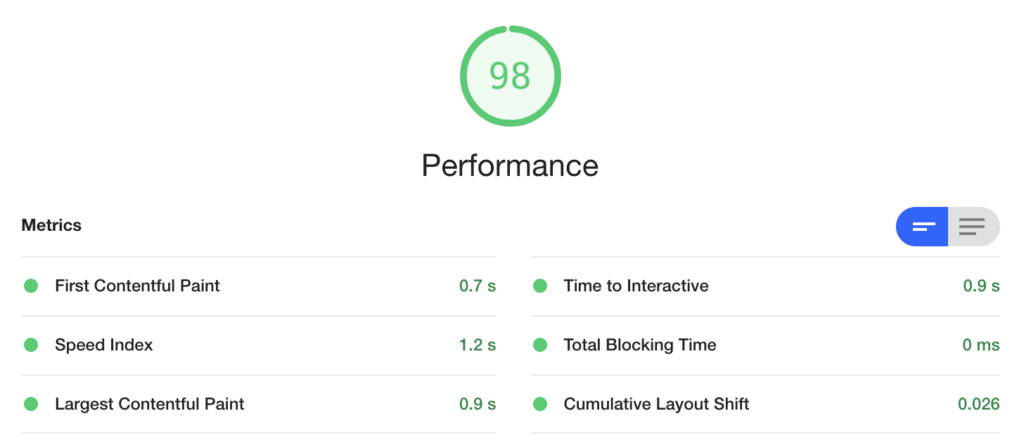
This allows us to meet and exceed the Core Web Vitals benchmarks that have recently become a Google ranking factor.
Built for the Future
WordPress is now 18 years old, which might be a reason for pause with most software platforms. But we think WordPress is a good long-term bet for two reasons:
- According to W3Techs, which surveys web technology usage, WordPress powers 42.5% of all websites, making it far and away the most popular content managements system in the world. That community will carry WordPress forward for years.
- WordPress’s drawbacks can be mitigated by using solutions that community has already created and that Automattic, the company behind WordPress, is actively fostering. Namely, using WordPress as a “headless” CMS leveraging modern Javascript frameworks.
What is Headless WordPress?
“Headless” means that the end-user experience is decoupled from the content management system. In other words, WordPress serves as the backend of the website—where you enter data and upload files—but it isn’t visible to users. Instead, a modern Javascript web app pulls data from WordPress via its API and presents information to end users via a static website.
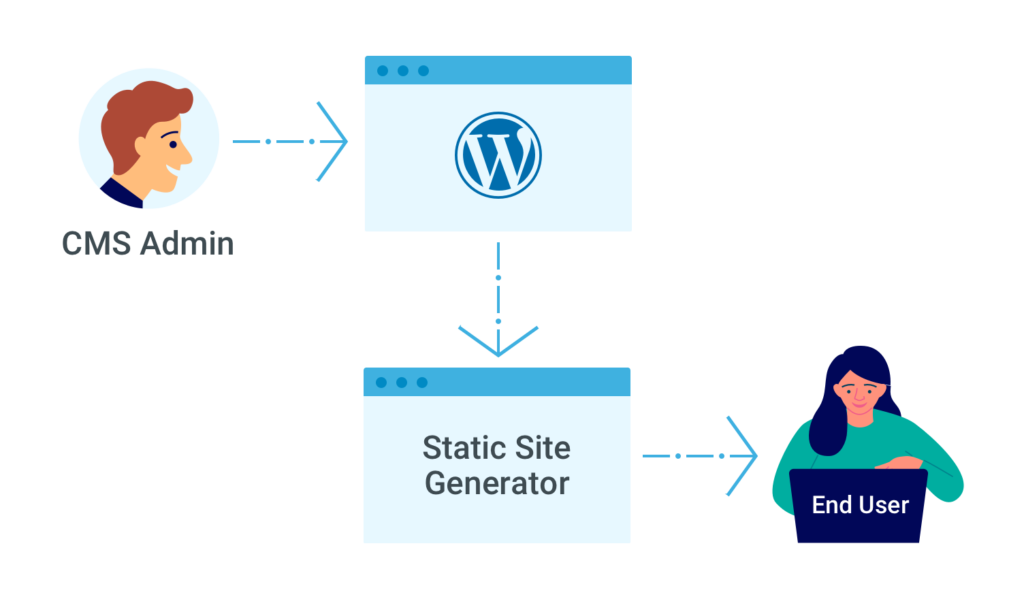
This means that PolicyPress can allow organizations to update and manage their website through an interface that’s familiar and easy while giving users a fast, modern browsing experience.
In short, using modern web technologies is good for users, good for getting ranked higher in Google results, and means that you can be confident your website is built on technology that will take your organization years into the future.
Built for Security
PolicyPress is built using two of the best hosting services out there—WP Engine and Vercel.
WP Engine

Vercel

WP Engine is known for its 24/7 security monitoring, firewall, daily backup, and award-winning support. We’ve added two-factor authentication to that suite of features to create an incredibly secure backend for every PolicyPress site.
Vercel is a platform for static websites and frontend frameworks that utilizes its own content delivery network to deliver lightening-fast experiences.
By separating the frontend and backend functions of your website, out platform is not only faster than most WordPress implementations, it’s also more secure. Visitors to your public-facing website have no idea what your WordPress login address may be—it’s a completely separate address and server.
So PolicyPress achieves better security not only through observing industry best-practices and taking advantange of WP Engine’s active monitoring, but also through good-old-fashioned “security through obscurity.” It’s very hard to attack a web server when you don’t know its address.
More to Come
I’ll be writing more about the benefits PolicyPress brings to folks working in public policy research in the weeks ahead. This will include outlining more of the existing features and previewing some of the features in our long-term product roadmap.
That roadmap is perhaps the most important feature of them all. Every PolicyPress customer will receive one year of free updates as we continue to refine this platform to serve the needs of policy professionals.
Our goal is make PolicyPress your last website build. We want to break the 3-year redesign cycle and replace it continuous software updates delivered to every organization using the platform.
We’re still working on pricing for those updates beyond the first year, but we think we’ll be able to work out a pricing schedule that makes sense for organizations of every size and budget.
But as I said at the outset of this post: No license fees, no lock-in.
If you want out, you can continue hosting your site on your own and still have an incredibly fast, modern site running powered by WordPress. You won’t owe us anything more than the price of the initial build.
That said, we hope that the features we continue to rollout and the support we offer makes people want to stick with the platform and continue to receive updates.

